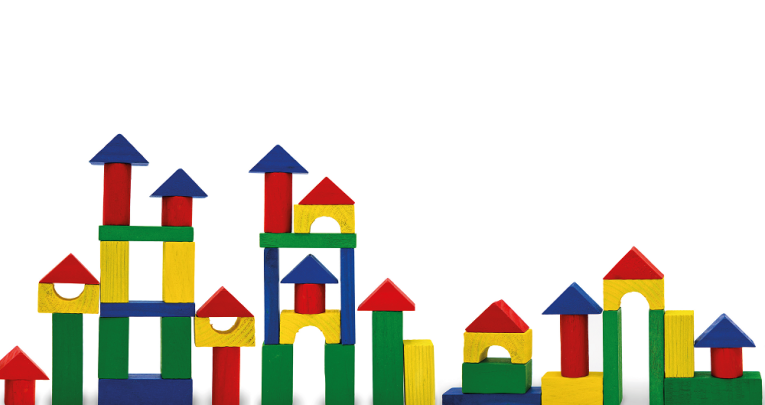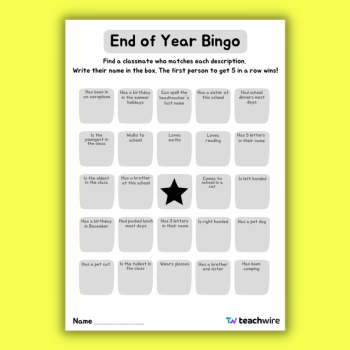How to ensure a smooth transition from Reception to Year 1

“When is it time to play?” – Children should enjoy the transition process, not just experience or endure it

- by Dr Alistair Bryce-Clegg
- International Early Years consultant and author Visit website

For lots of practitioners I work with in KS1, play is something that you do in Reception and when you finish your work. It was a real turning point for me as a teacher when I realised that it was during play that children did their best work, and a lot more besides.
In reality, no matter how strong your own belief in a play-based curriculum is, it is very difficult to swim against the tide if you are getting lots of pressure from colleagues, senior management, Ofsted, etc.
A headteacher once said to me: ‘That is all well and good, Alistair, but play theory won’t get the SATs that I need’. And on its own it won’t, but that theory, applied by someone who knows what they are doing, with support (especially from senior management), will get best outcomes for children (and they will probably exceed your SATs target).
I appreciate that in our fractured education system there is a huge amount of top–down pressure with unrealistic and inappropriate expectations for child development. Ideally the system needs to change, and that is something that we all need to push to make happen. But, that is not likely to happen anytime soon so in the meantime we have to teach creatively, making sure our practice is based on effective learning strategies.
Summer slump
Just as most children do not have the same level of ability in every aspect of their learning, neither do they have the same level of development just because of their age – but there are many similarities.
We know more than ever now about how the human brain and body develop, how children’s ability to think and reason changes, how they refine their gross and fine motor dexterity. Yet none of this information appears to feed into the curriculum that we teach them in KS1, or the way in which we teach it.
When a child enters Y1, they are only five (possibly six) weeks older than they were when they left Reception. In those weeks away from school their brain has been engaged in different ways of thinking and has been focused on all things that are not school. Little surprise then that lots of Y1 children really struggle on their return.
Not only are they going through a period of re-adjustment, they are often doing it in an unfamiliar space with an unfamiliar person and a set of completely different learning expectations.
When children first start in Reception you will often hear them ask, ‘Is it mummy time yet?’ In Y1 it is usually either, ‘When is it time to play?’. This can be frustrating as an adult, especially if you haven’t got the provision or resources, but the children are telling you that they are not ready for, or benefiting from, this new ‘formal’ style of learning.
Alleviate anxiety
It is not that Y1 teachers are not lovely or working really hard. It is that the prescribed curriculum and methods of teaching are not meeting the needs of children at this age and stage of development. However, good transition into Y1 can have a massive impact on children’s wellbeing, progress and attainment.
Play-based learning can (and does) work in Y1. But it is not as simple as getting the Lego out and letting them get on with it. As in EYFS, a successful learning environment looks and feels like play, but is underpinned by knowledge, planning and rigour.
Good transitions are crucial, both for children’s emotional wellbeing, and their potential for attainment. The greatest inhibitor to attainment in schools is children’s self-confidence and level of anxiety.
When children feel comfortable and ‘at home’ in their environment they are far more likely to succeed. When they are subjected to significant change, it can take many children a long time to adjust to their new situation.
During this period of adjustment their potential for maximum attainment is drastically reduced. To help to alleviate that anxiety, it is really useful when approaches to teaching and learning are harmonised at the point of transition. If children are moving between settings then this can be tricky, but if they are staying within a setting and moving to the next year group, it is far simpler.
As well as having some quality time to discuss transition with all of the adults who will be involved, it is really valuable to assess children’s emotional welfare, wellbeing and involvement before and after transition. This will give you an accurate picture of how successful your transition has been. Children should enjoy the transition process – not just experience or endure it.
For this to happen, it needs to be planned well in advance. If it is practical, pre-transition visits should be regular throughout the year, not just in the last week of the summer term. The most important thing to remember is that effective transition takes time, and is a process rather than an event.
Transition strategies to work on this month
- Make your first visit to Reception to ‘experience’ next year’s cohort – it is a really important part of the transition process that Y1 teachers can get to see firsthand the level that children enter Reception.
- Share your point of entry assessment of your Y1 children with the Reception staff – in Y1 you will have had your data from Reception to use as a starting point. Although accurate at the time, children have had a long period away from school and it may take them a while to get back up to speed. By October half term, Y1 staff can give feedback to Reception staff about how their children are settling emotionally and academically.
- Reception staff should share their baseline assessment of their new cohort with Y1 staff so that everyone is aware of the priorities for progress and you can share advice.
- Reception staff should also share their first GSA with Y1 and talk them through their environment plan.
- Reception staff should be able to talk to Y1 about their focus for direct teaching and how they have planned their continuous provision in relation to common play behaviours.
- Arrange a story swap (or similar activity) so you go to Reception to work with them or they come to you.
Alistair Bryce-Clegg is an education consultant and author. You can find him at abcdoes.com and follow him on Twitter at @abcdoes. This is an extract from Effective Transition into Year One (£18.99, Bloomsbury Education). Browse ideas for end of year activities.










